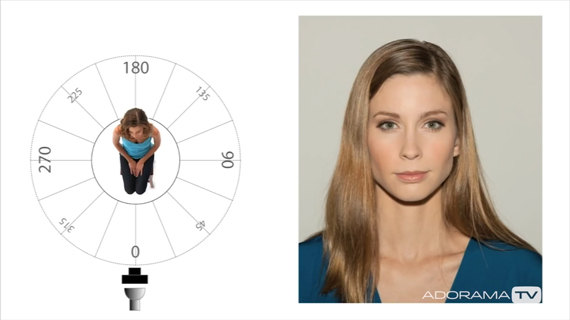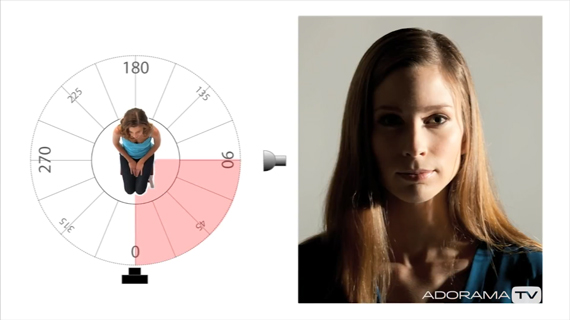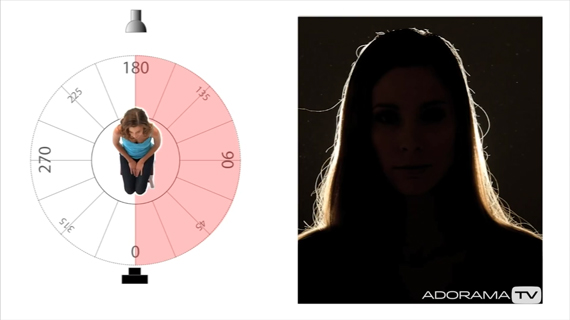Lighting affects two major aspects: highlights and shadows. Where the light source is placed in relation to the camera dictates how your image will end up. It thus becomes essential for a photographer to understand the basics of lighting. Photographer Mark Wallace with Adorama demonstrates how changing the position of your light in relationship to your camera can change your lighting dramatically:
Different Lighting Positions
In photography, the position of light is always considered in relation to the position of the camera.
- If the light is placed behind the camera, it is called front light because both the camera and the light are in front of the model.
- If the light is moved away from the camera to the side of the model, thus forming a 90 degree angle in relation to the camera, it is called side light.
- And if the light is placed behind the model, it is called as backlight. In this case, the light forms an angle of 180 degrees with the camera.
Now, consider that the camera is moved closer to the light by going around the subject. In this case, the light that was backlight will now become side light. This is because the angle between the camera and the light has changed from 180 degrees to 90 degrees. Again, if the camera is moved closer to the light, the side light will now become front light. Why? Because the angle has now changed from 90 degrees to 0 degrees. Don’t be confused by the direction the subject is facing. Remember, it’s all about the relation between the light and the camera.
How Direction of Light Affects Contrast
Contrast is the difference between the darkest and the lightest areas in a photograph. The greater the difference is, the higher the contrast. Contrast can be controlled by changing the direction of light.
- Front light creates a “flat” looking image because both sides of the subject are equally illuminated by the light. The difference between dark and light areas are low, resulting in a low contrast image.

- Side light, on the other hand, illuminates one side of the subject well while leaving the other side in shadow. The significant difference in the brightest and darkest areas causes a high contrast image.

- Back light illuminates the side of the subject which the camera cannot see. The difference in the brightest and the darkest areas is maximized, resulting in a very high contrast image. The resulting image is a silhouette.

Besides moving the camera horizontally around the subject, it is also possible to move it vertically around the subject. Every position creates a unique effect and you can use any of them depending on what kind of look you’re going for.
- - - - - - - - - - - - - - - - - - - - - - - - - - - - - - - - - - - - - - - - - - - - - - - - - - - - - - - - - - - - - - - - - - - - - - - - - -
Did you appreciate this newsletter? Please help us keep it going by Joining Our Patreon Supporters
What are your thoughts on this article? Join the discussion on our Facebook Page
PictureCorrect subscribers can also learn more today with our #1 bestseller: The Photography Tutorial eBook
- - - - - - - - - - - - - - - - - - - - - - - - - - - - - - - - - - - - - - - - - - - - - - - - - - - - - - - - - - - - - - - - - - - - - - - - - -
The post Portrait Photography: Position of Light appeared first on PictureCorrect.
from PictureCorrect https://ift.tt/cb3vhf9
via IFTTT






0 kommenttia:
Lähetä kommentti